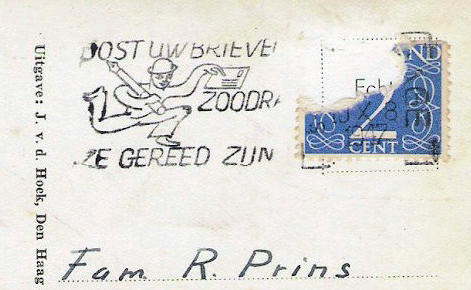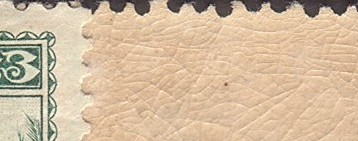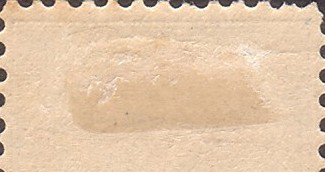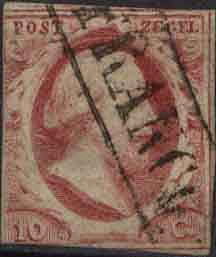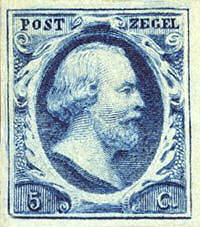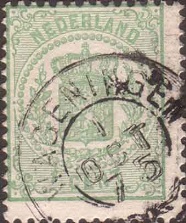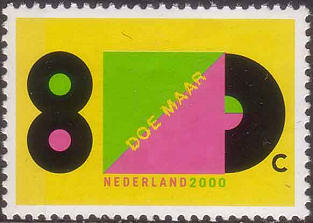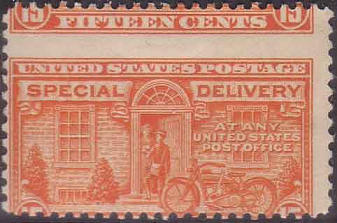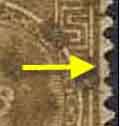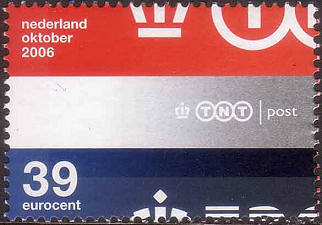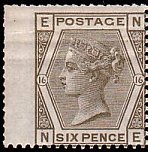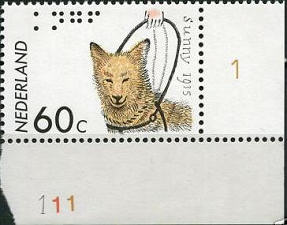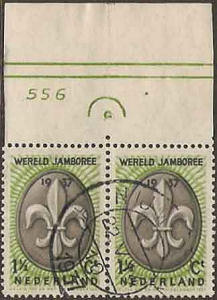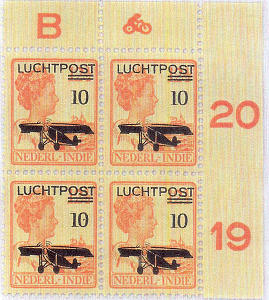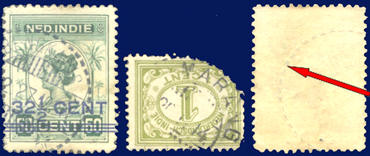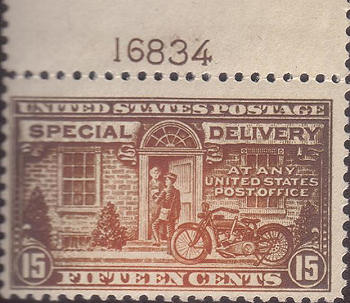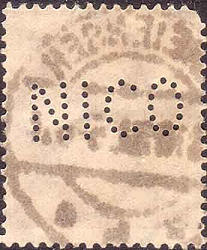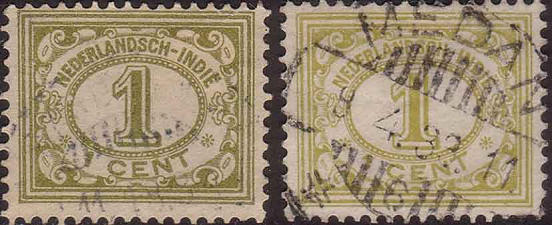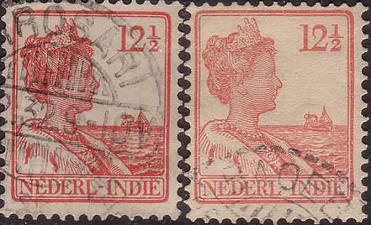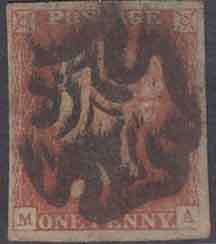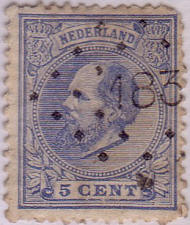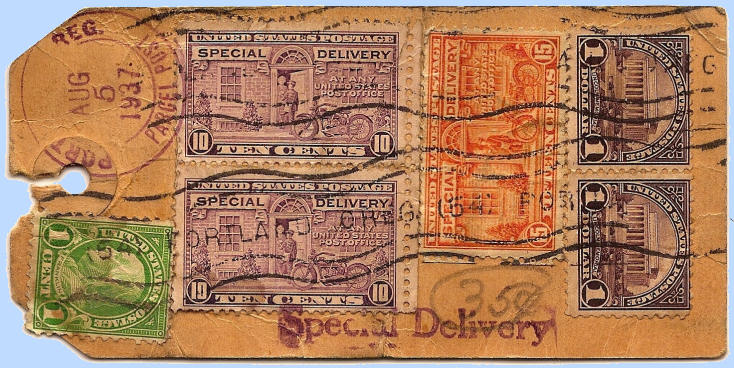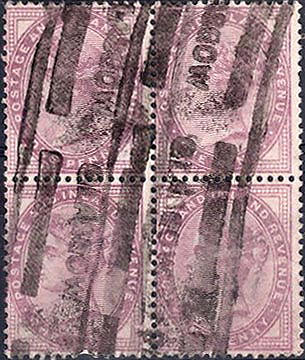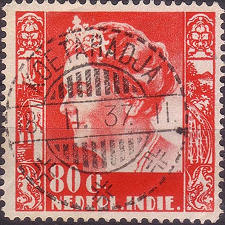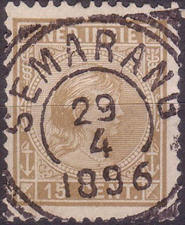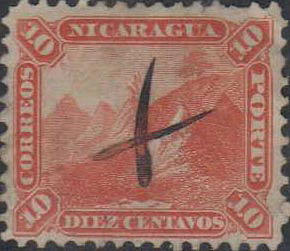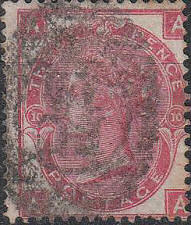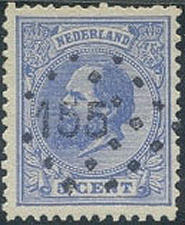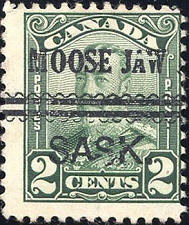What determines the condition, and thus the value, of stamps?Once I heard a collector say that cancelled stamps that are missing some teeth, are partly torn to pieces or are even missing a part, are still used stamps and thus collect-worthy.
|
||||||||||||||||||||
|
|
|
|
Damage
Off course we don't want to have damaged stamps in our collection. We avoid stamps with cracks, thin spots, discolorations etcetera. But it is important to recognise damages that originate from the production process, because damage resulting from (imprudent) use of stamps lowers the quality, but damages due to the production process are real assets.
First a few examples of damages that we should avoid:
|
||
|
||
But there are also damages that are an asset in your collection:
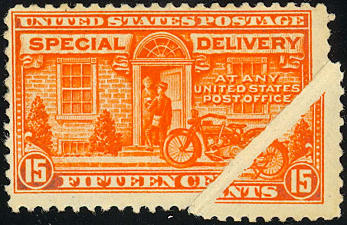
Example of a paper fold during printing
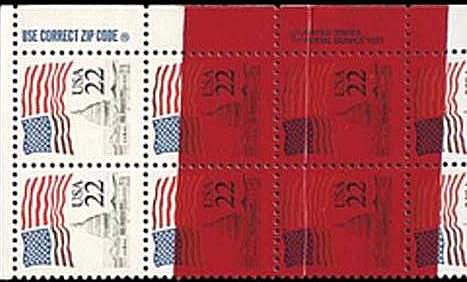
Stamp sheet with paper splice where 2 pieces of paper have been joint
Perfins
Perforated Initials or short perfins have been made in stamps to prevent theft of business stamps by own personel. In the past there stamps were regarded to be damaged, but nowadays they are very popular within a large group of specialised collectors. A nice perfin can be an asset in a standard collection.
Disappearing colours
Most times disappearing colours are the result of incorrect storage of stamps. But it can be caused by the type of ink that has been used. During a certain period disappearing or releasing colours have been used to prevent re-use of already used stamps. During removal by soaking the ink was released at the same time as the paper. Talking about destroying. In the collecting area Netherlands and its overseas areas we find amongst others the stamps from Dutch East Indies:
Quality of cancellations
Cancellation of stamps is intended to prevent re-use of already used stamps. In the beginning this was taken quite literally by using the so-called destruction postmarks. The cancelled stamps were really impossible to re-use. Later this became somewhat less and the various types of cancellation postmarks that have been used over time give the opportunity to collect nicely cancelled stamps.
Most important is that the image on the stamps stays visible. In case of an image of a chief of a state it is important that the portrait stays recognizable. In case of thematic philately it is self-evident that the part that is related to the theme is still well visible.
|
|
|
|
Used cancellations
Since date cancellation postmarks with date, time and counter number are common use, the nicest cancelled stamps are those who "look into your face" from your album. Stamps that are nicely, light and as complete as possible postmarked. Summit are stamps with a Bulls-eye or "right on the nose" postmark.
|
|
|
Pen cancellation
When stamps on a letter or postcard are not provided with a machine cancellation, the post man is obliged to still cancel them by means of a pen cancellation. As collector of a country collection it is simple: don't include them in your collection, unless it concerns a very rare stamp. But for specialised or thematic collectors pen cancellations can be interesting.
Postmark forgeries
The difference in value between a mint and used stamp can be very large in case of scarce use, for instance by a short period of use. In some cases so large, that it is worhwhile for a forger to apply false postmarks. A problem to recognise this kind of forgeries is that a very thorough knowledge of the use of certain postmarks in the regarding period is required, which the average collector does not have. Unscrupulous sellers can misuse this lack of knowledge of a collector to fill their own wallet. Often these false postmarks are noticed not earlier than in case of a valuation or sale. Ignoring species with unclear postmarks in case of expensive stamps can often prevent a (later) deception.
Don't buy:
|
|
|
Good postmark:
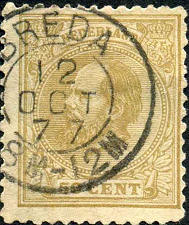
Nice clear round postmark
Mass cancellation postmarks
Last point of attention are postmarks that are applied on request. Such postmarks that were applied beforehand, by hand or mechanically, were made to simplify the processing of large amounts of post. This is an example of a clear postal reason for pre-cancellation on request.
Also modern stamps are often cancelled at the local post office on request of collectors. In contradiction to the pre-cancellations mentioned above those do not have a postal aim. The only reason to go to the post office to ask for a cancellation on new stamps is the fact that nowadays less stamps are used, especially the more special stamps (like the Dutch summer stamps or childrens stamps, but in fact all stamps except from the long-term standard stamp series with Queen Beatrix). Often the original gum is still present on the backside of these cancelled stamps. This can be prevented by sending a letter with the stamps to yourself, but this has the disadvantage that the stamps can be cancelled with a bad postmark. And those do not look nice in your collection.
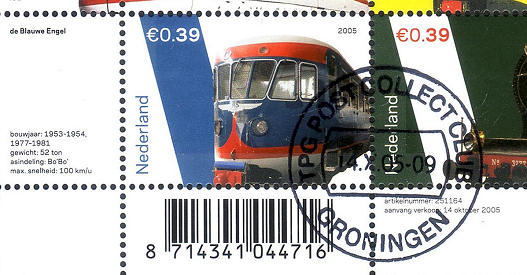
Pre-cancellation at the post office
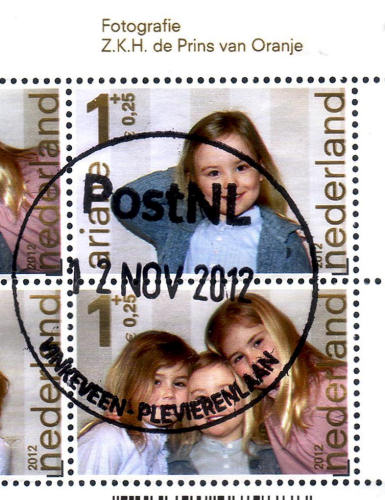
Pre-cancellation at the post office
ConclusionI don't have the illusion that this story discusses all quality aspects in detail. But I hope that you now have a little more general knowledge that enables you to pick out those stamps that will improve the quailty of your collection. For those who want to start a special collection, for example of colours or perforations, I hope that this article has made clear that this requires specific knowledge.
Knowledge that you can get from fellow collectors within or outside a stamp collectors club, or in the Association's library. On that place is information available on a lot of different subjects that you can study at location or, when you are member of a club that is affiliated to the Association, you can take home some books to digest this knowledge in all rest.
I wish you a lot of fun with the expansion, improvement or deepening of your collection.
Nico Helling
